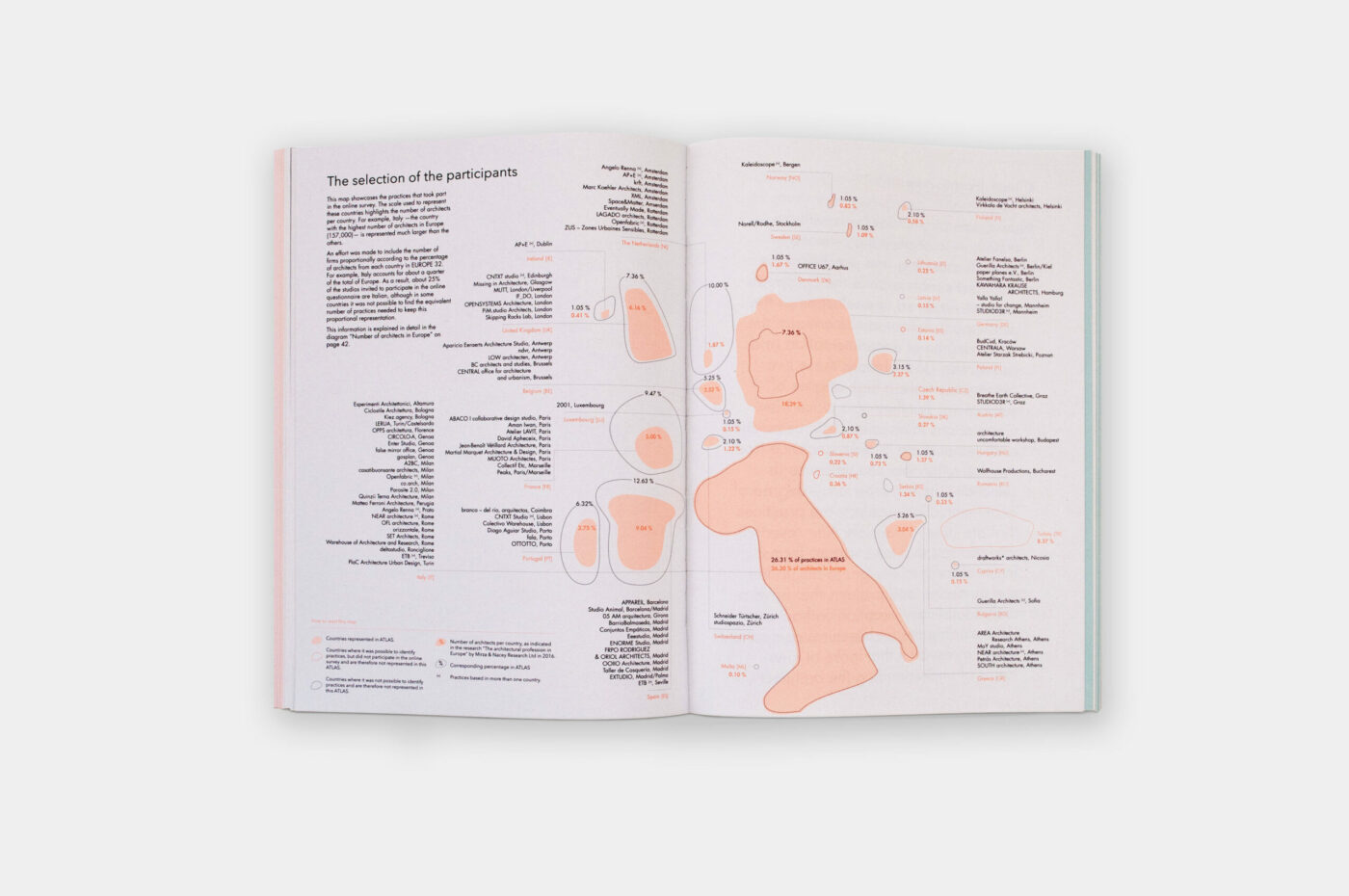
Curated by Itinerant Office, the book ‘ATLAS of emerging practices: being an architect in the 21st century’ has just been launched at the New Generations Festival in Rome. Volume editor Francesco Degl’Innocenti sat down with Itinerant Office founder Gianpiero Venturini, to discuss the findings of their research on the European context, and break a few misconceptions about the profession.
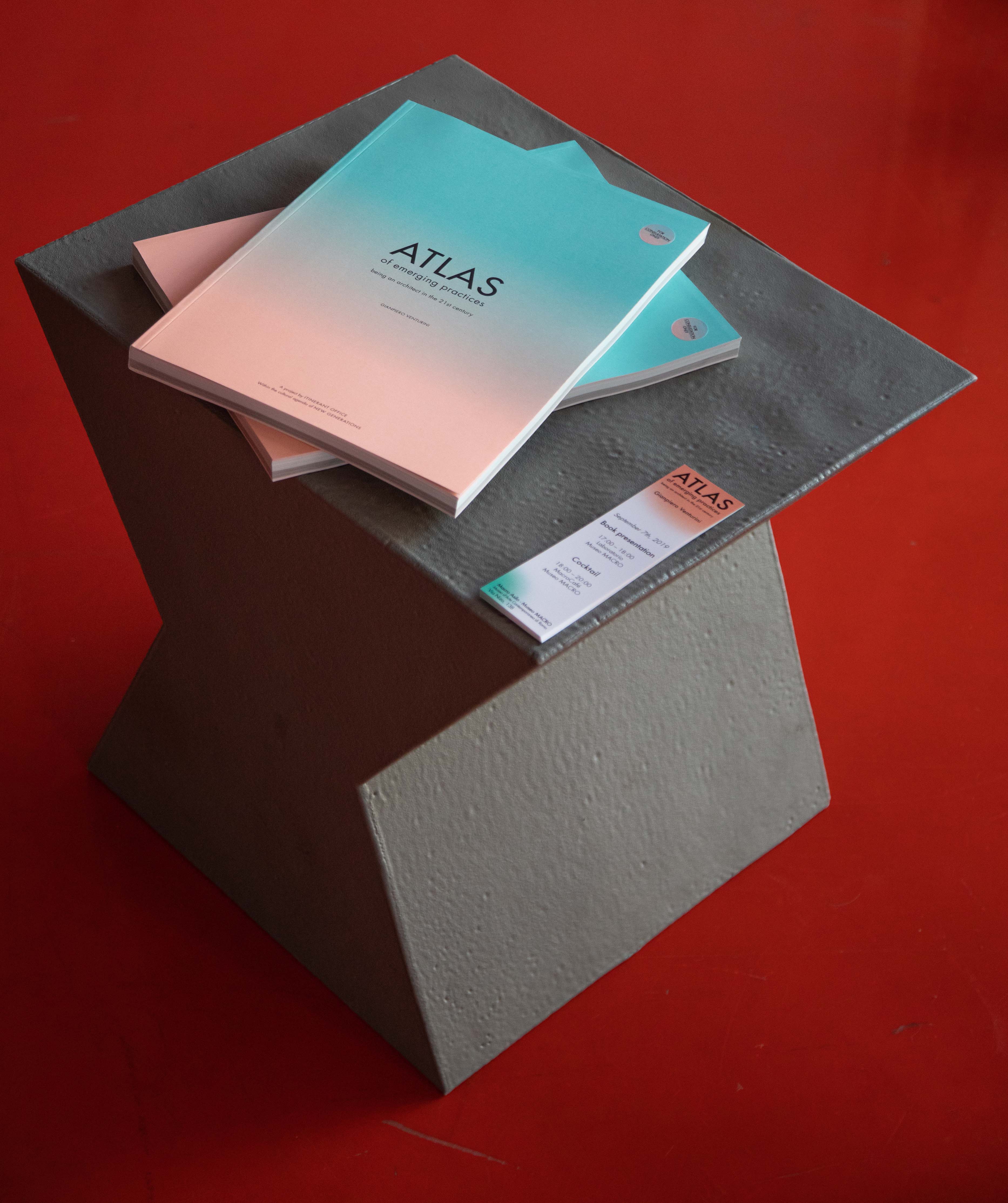
Francesco Degl’Innocenti: With Itinerant Office you have worked on a variety of formats, including events, interviews, workshops; how did the publication of Atlas come into being?
Gianpiero Venturini: The idea came from the desire to reflect on 6 editions of the New Generations festival, and the structure itself of the book arose from that. Engaging with 300 European firms had left us with intuitions worth of a deeper analysis: we were struck by the recurrence of similar concepts, so we re-examined the interviews and clustered words into what became the Atlas backbone: organization – business – media.
Given this peculiar genesis, we opted for an intermediate position: neither a scientific research nor a compilation of experiences.
Nevertheless, an important methodological choice was deciding how to be representative of the geographic weight of each European nation. As a reference we departed from the data contained in ‘Architectural profession in Europe’, a research conducted biannually by Mirza & Nacey for the EU Architects’ Council. The consulting firm surveys hundreds of thousands of professionals, the depth is clearly incomparable, but we decided to compose our sample according to the same geographic distribution: 26% of all European architects are from Italy, so an equal amount of the firms were selected in that area, and so on.
We invited 120 emerging firms from each european country, and the research was compiled from the 95 that answered our survey.
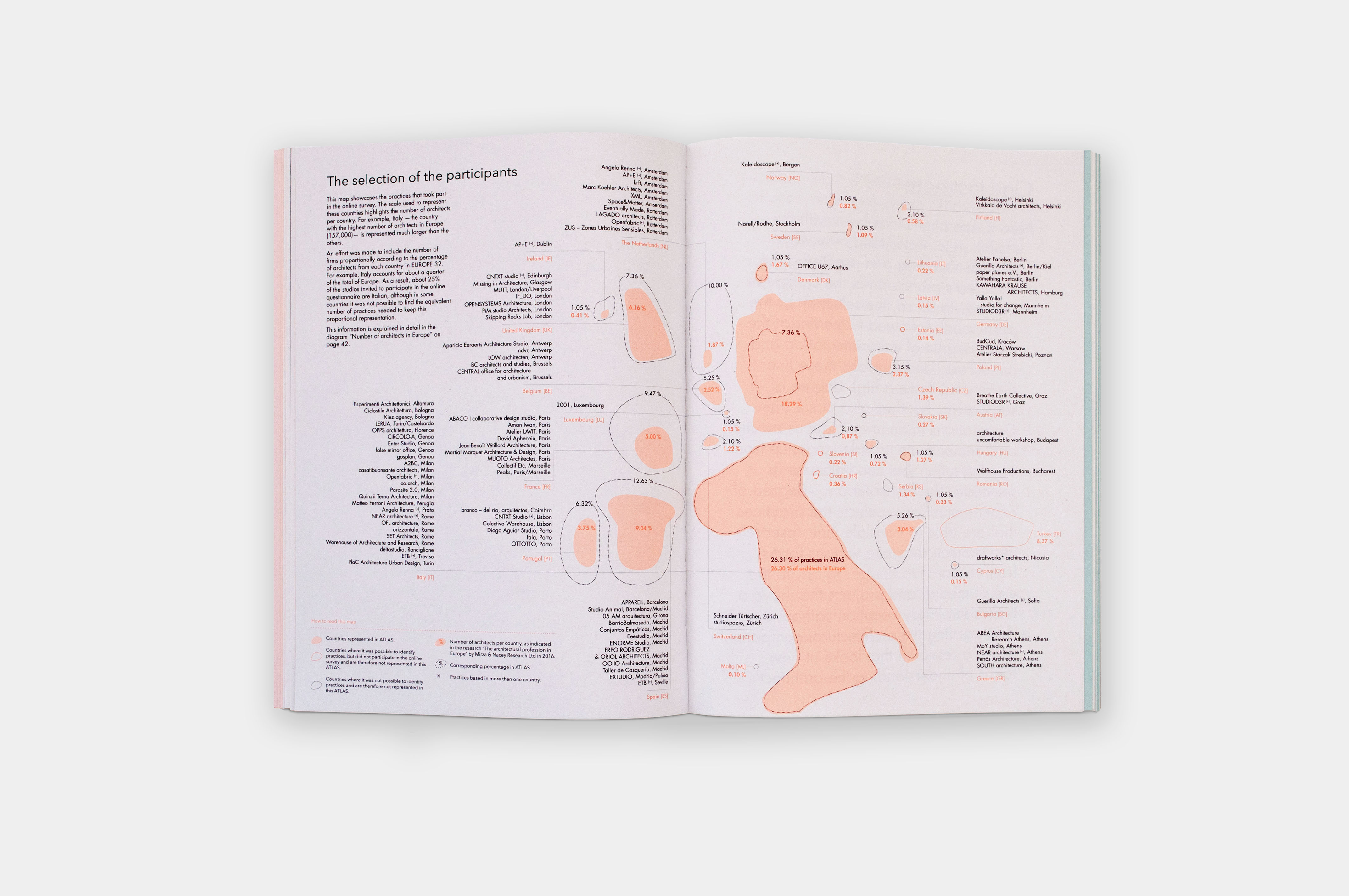
FDI: Moreover, such larger studies analyze data to indicate trends, while the scope of Atlas is substantially different: rather than only interpreting the direction of waves, you can at times shift scale granularly to highlight a red-flag. It seems almost an advantage.
GV: That’s true, the freedom of moving dynamically between a hunch and a scientific method is particularly fit also to let other issues come to light; throughout the process we grasped several other apparently peripheral questions that might be further investigated in future projects.
FDI: Although the text mentions several other researches and reports analyzing the topic, Atlas adopts a synthetic approach instead, but ultimately decides not to provide a toolkit for its readers. What is the reason of this choice?
GV: To me a toolkit would not make much sense. Rather, using data but also interviews and texts we wanted to broadcast the incredible variety of the European ecosystem when it comes to emerging architectural firms.
This seemed urgent because, as much as any architect is still bound to construction, the very first steps of your career can often take you toward diverging paths. The result is the observed phenotypic diversity.
The ties of the 2008 crisis with the real estate bubble may have sharpened this condition, but also 40 years ago the road to construction was slower for architects than for other professionals: this has historically led some to begin as editors, others as researchers, or activists. The phase of transition into the market has always allowed architects high degrees of freedom; back then the number of options was just lower.
Under this light, Atlas shows a trend in less traditional, more experimental interpretations to practice architecture. At the same time, it proposes a much wider range of tools to kickstart your activity, well beyond the conventional participation to architectural competitions.
FDI: Architects are bound to construction, yet don’t build themselves; they imagine, and annotate so that someone else will build. Maybe Piano’s analogy between the conductor and the architect, the “musician with the orchestra as her instrument”, is not entirely outdated yet. Are emerging practices making use of the notational nature of architecture, and conjugate it with new contexts?
GV: Atlas shows this tendency in relation not only to disciplines, but also to new ways to communicate: that’s why we decided not to elaborate further on the conclusions creating a step-by-step guide. We wanted to leave with the implicit question: “What if universities could provide this complex map of trajectories already before graduation?”
FDI: You stress the importance of the germinal phase of a firm, and that’s the combination of two parameters at least: taking the first steps in the desired direction, as well as sharing a vision with the other partners. In the start-up world, they would often try to cover as much of their future operations with founders from different backgrounds, but architecture doesn’t always follow the same logic.
The survey investigates the core nucleus of a firm: have you found emerging practices developed by a variety of founders, rather than architects alone? For instance, does their core include distinct profiles infiltrating architecture?
GV: Although this question was not addressed directly in the survey, my impression is that the almost totality of the cases have their background in architecture.
FDI: That’s a curious point in regard to the aforementioned ‘beginner’s freedom’: the position of a practice in the market becomes ever more important. You seem to hint at a centrifugal force, a multitude of peripheral positions seeking continuous disciplinary hybridizations.
GV: Now that you make me think of it, the push emerging from the data is inside out rather than outside in: more often, architects explore uncanny trajectories by substituting other professionals. For instance, in the Netherlands Space&Matter and Marc Koehler are trying to replace external developers in some of their projects, saving the real estate development fee.
FDI: In relation to business, a part of Atlas is dedicated to ways to finance one’s labour. Which trends did you see emerge?
GV: The ‘Business’ section studies a thousand projects according to the type of commissions and clients, inquiring manners to reach an economic sustainability; an ìd it may seem banal, but still to this day the first private commissions come from one’s next of kin, offering the chance to experiment without the pressure of a conventional client.
In general, there is a strong correlation between organizational structure and type of budgets. So when you compare the size with some indicated amounts it’s clear that they are competition estimates, purely hypothetical. Going back to the tools, it’s a sign of how design competitions are neither the only instrument, nor a financially reliable one.
Instead, several offices mentioned budgets under 5000 euros, actually highlighting the rise of ‘unsolicited projects’. They abide to no client nor brief, in hope of later developing a position handling following phases, or to establish the groundwork for some funded research.
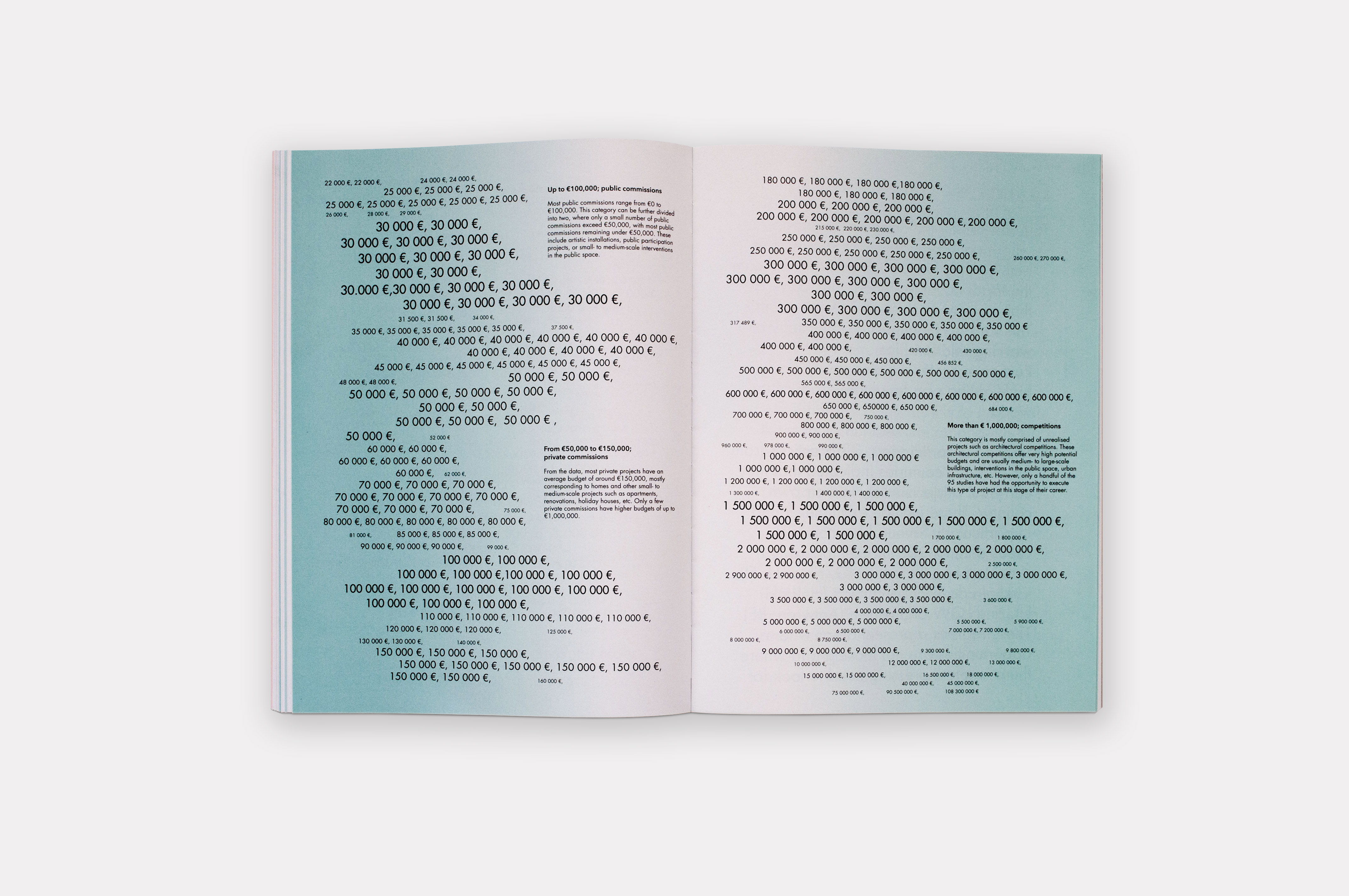
FDI: Not only, this also helps reconstructing the threatened credibility in the profession. I mean, although the European stack is mainly legislative, operating through standards and indexes, yet most buildings are not properly ‘designed’, but just built. Such unsolicited projects reaffirm the relational role of the architect within a community.
GV: Exactly. This practice seems more common as you move North, especially due to the receptivity of administrations: you have higher chances to transform the invested time into an actual commission. Take again Space&Matter with their Sweet Hotel project: exploring the concept of the city as a diffuse hotel, they researched the history of Amsterdam bridge-houses before their abandonment, created a strong narrative, drafted a business plan, pitched it to the hotel chain Lloyd, connected them with the municipality, all to repurpose these unused spaces into hotel rooms.
Architects are incredibly apt to craft one story into several narratives, distinctively appealing to each stakeholder.
FDI: Not to mention all projects in which architects pick up roles managing the participation of citizenry. Such experiences have steadily multiplied, although professionals have hardly ever being officially appointed.
GV: Indeed: the unsolicited spectrum spans from the entrepreneurial spirit to processes engaging with neighbourhoods, as a cultural mediator.
One of the most intriguing examples is the ‘Pool is Cool’ campaign: after realizing that Brussels had no outdoor pools, in the summer of 2011 the founders started a series of actions, sensibilizations, happenings, events all leading up to the design of a public swimming pool.
FDI: The initial creation of a strong narrative can become itself your position within the market.
GV: Yes, because their effective narrative intercepted political issues, the lack of such public spaces, social inclusion, and later was transformed into tangible commissions.
They used new media well beyond their conventional communicative application, ‘Pool is Cool’ architected the conditions for a project to happen. I mean, you can alter the rhythm of architecture in so many more ways now; private commissions or public competitions are losing centrality.
FDI: It is intriguing to notice how one reveals herself as an architect further into the process. This seems like a favourable condition, in contrast to the sectarianism often characterising architecture. Out of the whole research, what surprised you the most?
GV: I was not expecting the amount of ways they define their own organization: ‘office’, ‘atelier’, ‘workshop’, ‘studio’, ‘network’, ‘platform’, ‘collective’, ‘team’, ‘laboratory’, ‘agency’, ‘practice’. They are not at all equivalent structures; they indicate different approaches, angles, methodologies, ambitions. The fact that emergent practices deal carefully with this aspect shows that more conventional ones do not pay enough attention to it.
I mean, five years ago the competition for the Guggenheim in Helsinki infamously gathered 1700 proposals, and an investigation by Taller de Casqueria calculated the immense labour effort gone to participate.
Rather than compulsively taking part in architectural competitions, we propose: ‘What if we spent time and effort planning and designing our own future practice? What if the very first year of practice is dedicated to understanding how to organise internal operations, how to manage our resources, how to communicate our ambition?’.
Overwhelmed by the necessity to put out projects, not many take time to discuss this fundamental step. But in Atlas it is evident: establishing a ‘workshop’ is quite distinct from running an ‘atelier’. A ‘platform’ aims at decentralization, requiring a different hierarchy from a ‘studio’. Yet none of these is the conventional ‘architecture office’.
The three sections must be interpreted in relation: often times, to the structure corresponds a type of projects with a specific budget, with a degree of ambition.
Size is also dependent on it; the moment architecture is approached with the clear intent to build, then inevitably the size of your practice is affected, with an increase in number of employees. The reason is simple: unlike curatorial projects where you wear a variety of hats, construction budgets allow you to hire specialized personnel. If well capitalized, then it is really up to the office ambition to decide the threshold to reach. Some might decide to stay small in order to keep quality under control. Others, like Marc Koehler and their Superlofts, aim to grow such replicable modules ideally in any part of the globe. It is all written in a firm’s DNA, only occasionally decided by a competition.
I keep going back to the architectural competition because it is misconceived as a model with no alternatives.
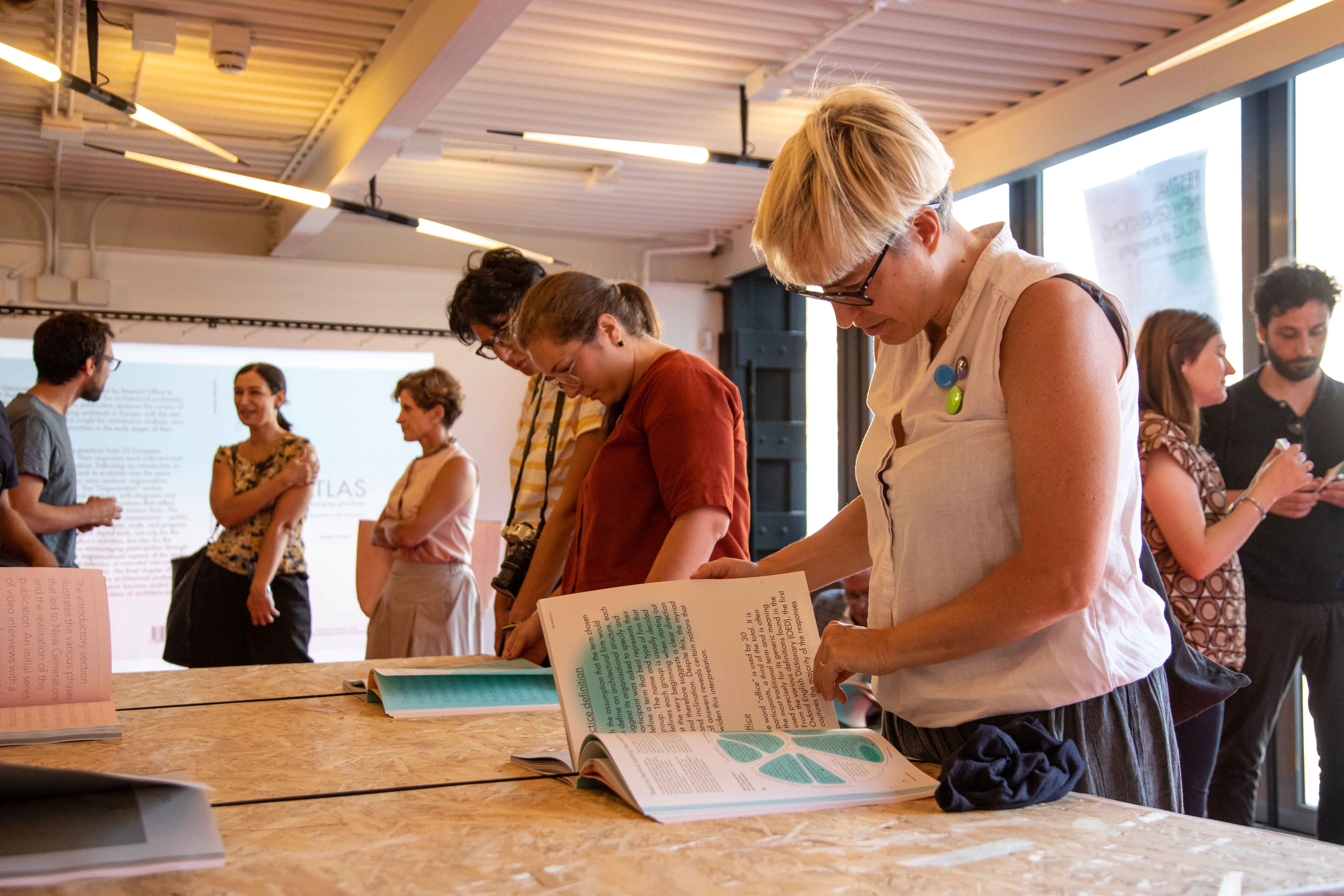
FDI: …quoting Bruce Mau, ‘Don’t enter design competitions. Just don’t. It’s not good for you’.
GV: Or simply, just enter other competitions. With Itinerant Office we recently won a cultural call proposing an architectural project. No other architect participated because that was not sectorially defined.
FDI: Out of curiosity, did you find any unorthodox business model?
GV: Really innovative ones are sometimes hardly scalable, that’s why in the case of business models we decided to highlight the variety of readily available options. Take the genesis of PiM.studio Architects: after working for Kengo Kuma for 10 years and winning the V&A competition in Dundee, the founders established an independent practice taking care of the project construction. Aware of Kengo Kuma’s reliance on external companies in the UK, they seized the opportunity of becoming one.
In spite of opening a firm right after graduation, this model works the other way around: they built trust over time, and capitalized it with access to a long-term, high-profile project with a budget inconceivable for most.
FDI:
Architectural spin-offs, mediators between designers and clients. Maybe we found another organizational structure.